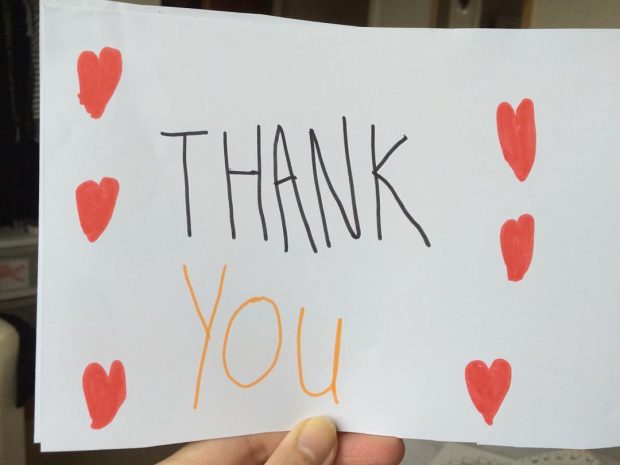For the past three months I have been on a Connective Tissue Exercise Program with the highly qualified Esoteric practitioner and physiotherapist Kate Greenaway-Twist.
These hour long online sessions have incorporated simple different Connective Tissue Exercises to assist in connecting deeper to my body, releasing long held ill-patterns and supporting my body to return to a natural harmonious way of moving, from the inside out.
Connective Tissue Exercises are very different to stretching exercises, or what you would do in a gym. They are very much about connecting to your body and breath first; then moving with quality, rather than in a mechanical way. They are inspired from the modality: Esoteric Connective Tissue Therapy founded by Serge Benhayon, of which Kate is a qualified practitioner.
“Connective Tissue Therapy is a gentle hands-on therapy that helps restore the whole body to its natural flexible flowing state. It restores the balance of the organ systems as well as the physical framework and thus, is an important key to the body’s energetic vitality.” Kate Greenaway-Twist
I commit to doing these exercises every morning when I get up, and every night before I go to bed. Kate and I have also been discussing how I can incorporate these exercises into my day, as at times I can go into my head, rush and stress, racing from one thing to the next; this raciness can drive me to react to a child’s behaviour in school.
Kate and I also talked about how I could introduce some of the exercises to the kids, and how it would be great for them to reconnect to their bodies before they learn, and how lovely their bodies can feel.
I experience children coming into the classroom and school – be it at the start of the day, morning break, or lunchtime – feeling anxious and disconnected from their bodies. This can be from personal things going on at home, fights in the playground, things they don’t want to feel, the pressures of school, or ‘hyper’ from a sugary lunch or play activity, which can create a lot of tension and unease in their body, thus affecting the classroom, other people, and their day. They simply don’t feel settled or ready to learn.
So over the past few weeks I have introduced two simple Connective Tissue Exercises to the kids at the beginning of each class, in two schools across 12 different classes. With this, I felt and saw a huge difference in a few minutes in the children and the feeling of the room – it was immense: other teachers have commented on this, they can feel it as soon as they walk in.
The classroom goes from being noisy, messy, not in the literal sense, but more the kids being ‘in their head’, distracted and all over the place, to an absolute quality of stillness, both in the classroom and in the children’s’ bodies. The talking stops, the children all settle into their bodies and are ready to start the day, the lesson, and receive what there is to learn.
When we come to start each lesson, nearly every child is much more present and still. When they move to watch the demonstration, there is no talking or rushing, they walk quietly and listen. They can feel the difference in their bodies too. It is very clear and easy to feel what is needed to support the kids and the class. Every class is different, even if the lessons are the same.
One pupil, even pulled me up because I wasn’t going to do the Connective Tissue Exercises and instead was going to start the work straight away that I had planned – as I had one lesson to do this in – and had gone ‘into my head’ and motion to get it done. He put his hand up and said: “Are we not going to do those exercises?” and then demonstrated one of them. I laughed, smiled and said yes, as he called what the class and I needed in that moment.
You may not think this is such a big deal, but when we look at the bigger picture IT IS, with the rise in mental health issues, self-harming and suicide rates in children and teenagers across the world.
These stats from the mental health organisation ‘Young Minds’ 1 show the growing rise in mental health issues in the UK.
- 1 in 10 children and young people aged 5 -16 suffer from a diagnosable mental health disorder – that is around three children in every class.2
- Between 1 in every 12 and 1 in 15 children and young people deliberately self-harm. 3
- There has been a big increase in the number of young people being admitted to hospital because of self-harm. Over the last ten years this figure has increased by 68%. 4
- Nearly 80,000 children and young people suffer from severe depression.2
- Over 8,000 children aged under 10 years old suffer from severe depression.2
- 72% of children in care have behavioural or emotional problems – these are some of the most vulnerable people in our society. 5
- The number of young people aged 15-16 with depression nearly doubled between the 1980s and the 2000s. 6
Children of all ages are facing enormous pressures with life and school these days, from parents fighting at home, exam stress, trying to fit in with how they think they should be or with other kids at school, being bullied, abused and/or feeling pressured to have sex or take part in sexual acts at a younger and younger age.
Children often can’t concentrate with all this going on, hence the levels of disconnection, depression, giving up, discontent and checking out on computer games, sport or studies… amongst many other things.
When it comes to school we often put far too much pressure and focus on the mind and the intellect, forgetting about the body; we make it all about goals, attainment and grades – as every teacher knows and will tell you if you sit down and honestly speak with them.
We are putting all this before the real reason we are there; to connect to and build relationships with the kids, which supports them to trust, learn and grow into responsible adults, fully committed to life.
What if we knew that by changing how we move and our posture, we can change our thoughts and behaviours, from ones of negativity, disconnection, depression and discontent, to being engaged, feeling lovely, much more open and ready to receive and learn.
It’s so important we stop and consider all this, AND what would our education be like if we truly supported our kids to connect to their body before they learn?
With deep love and appreciation of Serge Benhayon and Kate Greenaway-Twist.
By Gyl Rae, Teacher, Scotland
References:
- http://www.youngminds.org.uk/training_services/policy/mental_health_statistics
- Green, H., McGinnity, A., Meltzer, H., et al. (2005). Mental health of children and young people in Great Britain 2004. London: Palgrave.
- Mental Health Foundation (2006). Truth hurts: report of the National Inquiry into self-harm among young people. London: Mental Health Foundation
- YoungMinds (2011) 100,000 children and young people could be hospitalised due to self-harm by 2020 warns YoungMinds. London: YoungMinds.
- Sempik, J. et al. (2008) Emotional and behavioural difficulties of children and young people at entry into care. Clinical Child Psychology and Psychiatry, 13 (2), pp. 221-233
- Nuffield Foundation (2013) Social trends and mental health: introducing the main findings. London: Nuffield Foundation
Further Reading:
Education, Schools & Teaching our Kids: ‘Quality of Presence’ in the Classroom
Teachers are Gold
So Long Sciatica – Thanks to Universal Medicine and Esoteric Connective Tissue Therapy





